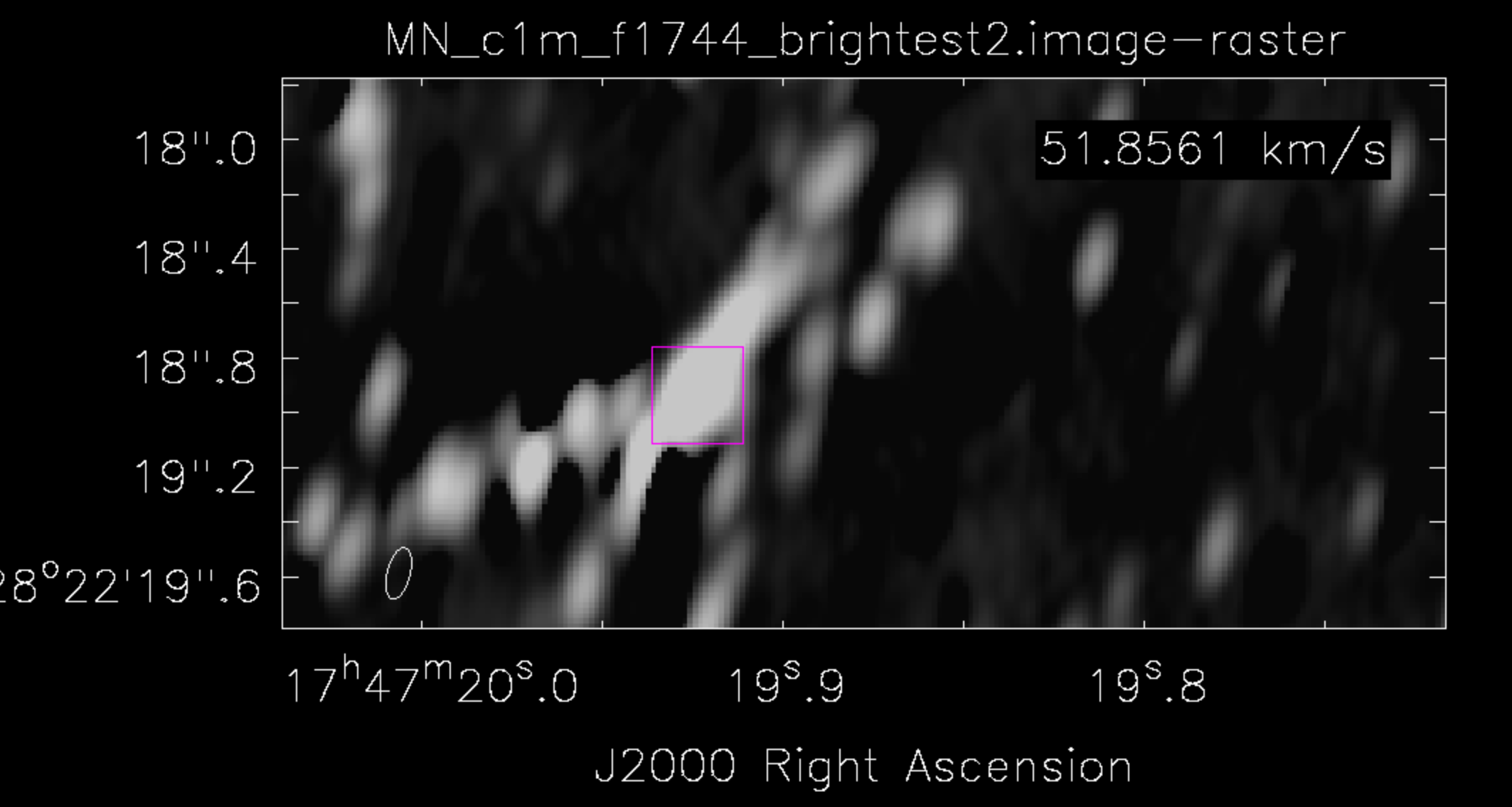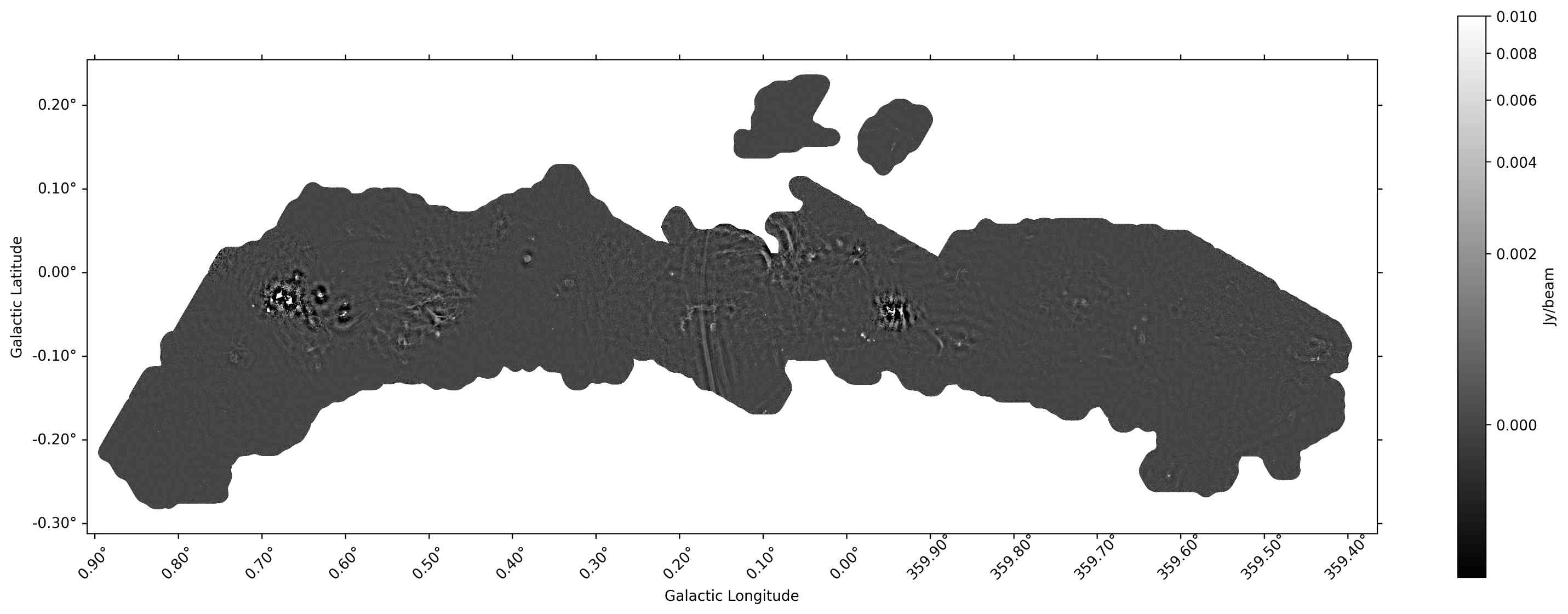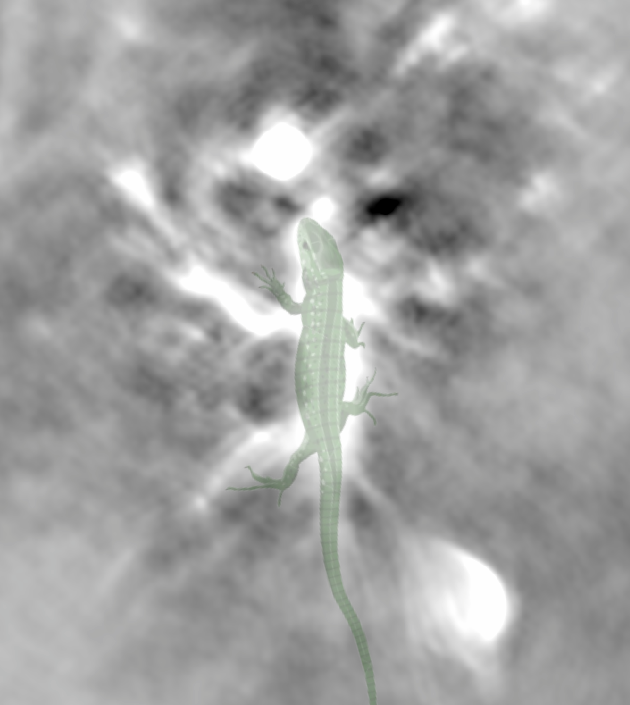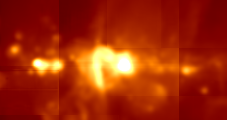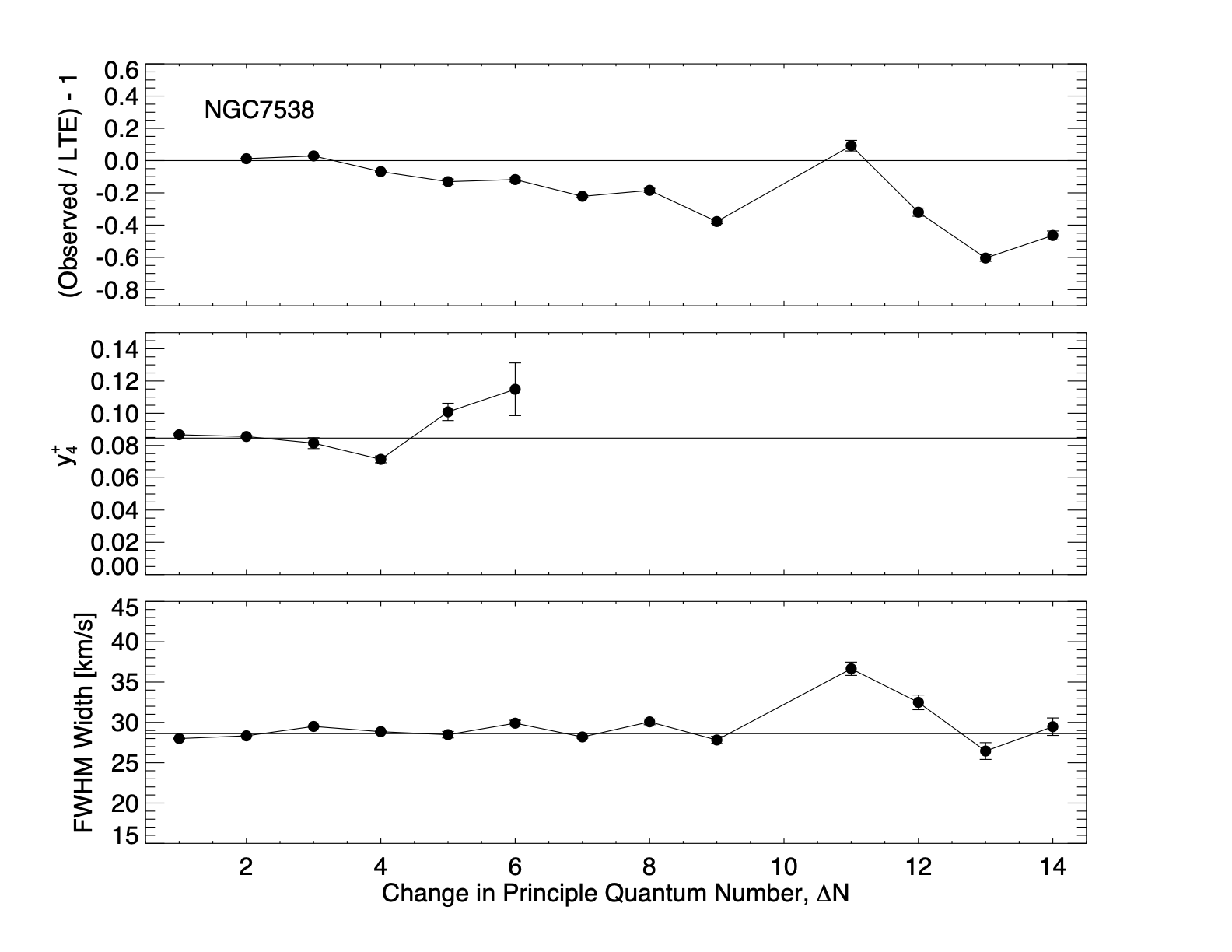Peering into Sgr B2 with JWST
Despite the high extinction towards the center of the Galaxy, JWST can probe deep inside massive star-forming clouds. Our JWST program 5365 observed Sagittarius B2 with NIRCam and MIRI.
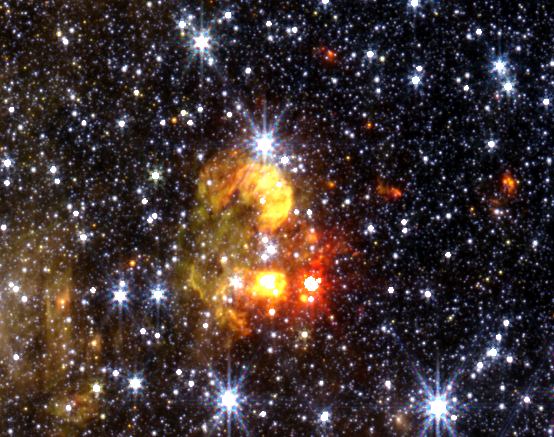
Cataloging H2O masers in Sgr B2 - a massive star forming region
Sagittarius B2 is the most massive molecular cloud with the highest star formation rate in the Galactic center. Water masers are usually found around massive forming stars.
We found 500 water masers in the cloud and for the first time determined their nature based on high-resolution multiwavelength observations. | Properties of H2O Masers and Their Associated Sources in Sagittarius B2 |
